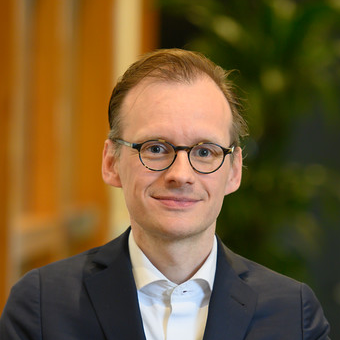EPO Enlarged Board of Appeal Introduces Strong Presumption of Priority Entitlement
“Now that G1/22 & G2/22 has issued, it has become much more difficult for parties to successfully challenge priority claims, which is good news for applicants / proprietors.”
The Enlarged Board of Appeal of the European Patent Office (EPO) on October 10 issued its (consolidated) decision G1/22 & G2/22, which promises to significantly reduce priority issues for applicants—U.S.applicants in particular.
Background
When the applicants for a European patent application differ from the applicants on the priority application, the EPO employs the well-established “joint applicants approach” to evaluate the priority claim’s validity. For the priority claim to be valid, and assuming there’s been no transfer of the priority right, all applicants of the priority application must also be among the applicants of the subsequent European patent application. The table below outlines various scenarios and indicates whether the priority claim is valid according to the joint applicants approach.
In scenarios 4 and 5 the priority claim can still be valid, but only if the priority right has transferred from party A to party B before the filing of the European patent application. This requirement is in accordance with the current Guidelines for Examination (Chapter A-II-6.1). )
Referred Question
In the two appeal proceedings (T 1513/17 & T 2719/19) underlying the present decision, the outcome hinged around the question whether the priority claim is valid in the following situation which is not uncommon for U.S. applicants.
In case T1513/17, the priority application was a U.S. provisional application filed in the name of three inventors. However, the subsequent Patent Cooperation Treaty (PCT) application, which later entered the European phase as a European patent application, listed the inventors as applicants for the United States only and two legal entities as applicants for all other states/regions, including EP. Thus, not all applicants of the priority application were among the applicants for the European patent. Further, there had been no transfer of the priority right from two of the inventors before the filing of the PCT application.
T2719/19 concerned a divisional application stemming from the above referenced PCT application and will not be discussed here.
In T1513/17, the patent proprietor argued that the priority claim was valid even though not all applicants of the PCT application were applicants for the European patent. The argument was based on Art. 118 EPC, which stipulates that in case applicants for a European patent are not the same for all designated EPC Contracting States, they shall still be regarded as joint applicants before the EPO. In the absence of any corresponding PCT provision, the same would apply to a PCT application with respect to the EP designation. This viewpoint is also referred to as the “PCT joint applicants approach”.
On the other hand, the opponent argued that neither the priority claim nor the PCT joint applicants approach was valid because there is no legal basis to apply Art 118 EPC analogously to PCT applications.
The Board of T1513/17 acknowledged that the PCT joint applicants approach is a disputed concept in EPO case law and opted to refer the question to the Enlarged Board of Appeal.
The Decision
In its well-reasoned decision, the Enlarged Board of Appeal explained that:
i. In normal circumstances a party transferring a right to a subsequent application also wishes that the subsequent applicant benefits from the priority right.
ii. There is a lack of formal requirements for transfer of a priority right. In most jurisdictions, priority rights can be transferred without any written agreement or other formalities and the EPO should adapt itself to the lowest standards established under national law. The EPO should therefore accept informal or tacit transfers of priority rights under almost any circumstances.
iii. The formal requirements for claiming priority in accordance with the EPC can only be met by the subsequent applicant if the priority applicant provides the necessary documentation completely and in time. The fulfillment of these requirements can be regarded as strong factual evidence of the priority applicant’s approval of the subsequent applicant’s entitlement to priority.
The Enlarged Board of Appeal concluded that there should be a strong presumption of entitlement to priority to the benefit of the subsequent applicant. A party challenging the entitlement to priority cannot just raise speculative doubts, but must demonstrate that specific facts support serious doubts about the entitlement to priority.
The presumption applies irrespective of whether the European patent application stems from a PCT application and irrespective of how much overlap there is between the group of priority applicants and the group of subsequent applicants.
As regards the viability of the PCT joint applicants approach, the Enlarged Board considered that the mutual filing of a PCT application (priority applicant A as applicant for US and party B as applicant for all other states) demonstrates an implicit agreement between these parties conferring the priority right for the EPC territory to party B. This concept of an implied agreement would in most cases lead to the same result as the PCT joint applicants approach, and therefore the Enlarged Board found it unnecessary to decide on the general validity of the PCT joint applicants approach. Further, it is notable that the implied agreement concept may apply independently from the presumption of priority entitlement. However, an implied agreement can reinforce the presumption of priority entitlement.
Going Forward
Now that G1/22 & G2/22 has issued, it has become much more difficult for parties to successfully challenge priority claims, which is good news for applicants / proprietors. Nevertheless, the following practices may be advisable:
- * If possible, file a first (U.S. provisional) application in name of the party that is expected to become the applicant (e.g. in name of the employer) rather than filing in name of the individual inventor(s).
- * When assigning a patent application that is still in its priority year, make sure to also explicitly transfer any and all priority rights arisen from that patent application.
Image Source: Flickr
Jurre Ladde
Jurre Laddé (MSc) is a Dutch and European Patent Attorney at Patentbureau De Nederlanden based in The Netherlands. Jurre studied Applied Physics at the University of Groningen. His bachelor- and […see more]









